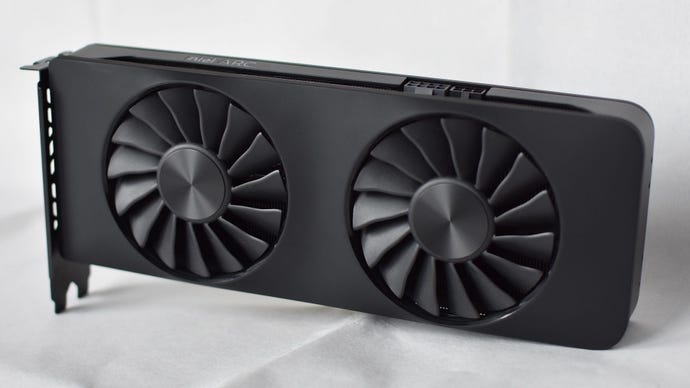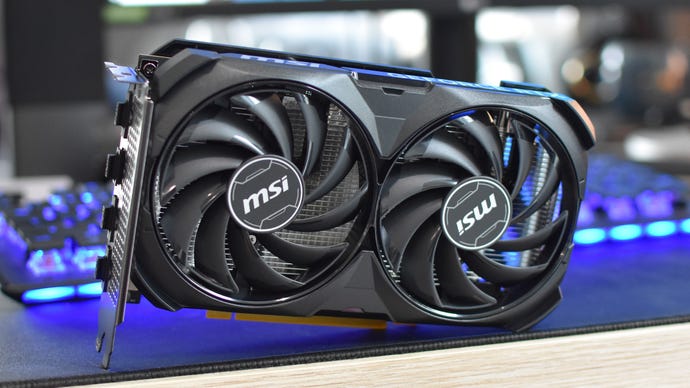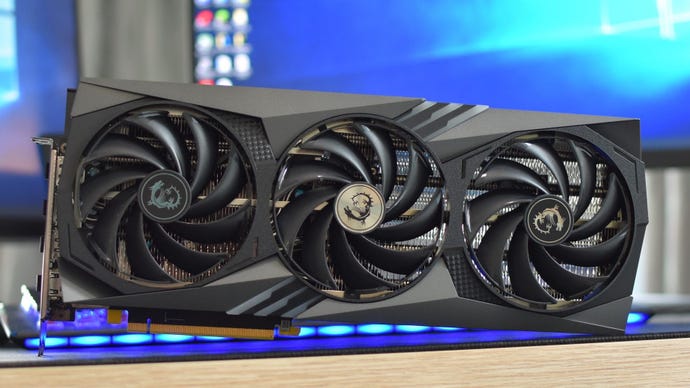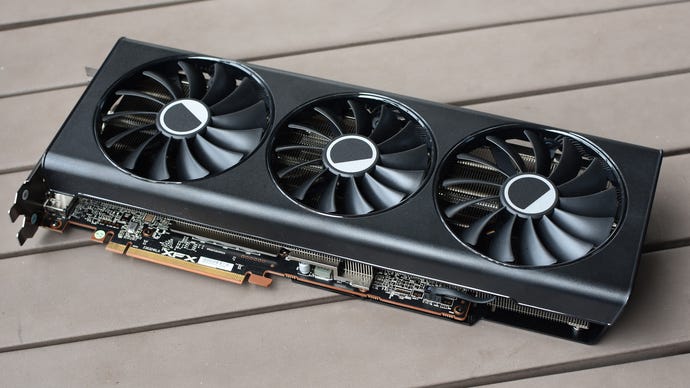Best graphics cards 2023: the top gaming GPUs
Our top graphics card picks for 1080p, 1440p, and 4K
Something that bothered me about our best graphics cards rankings was that even with new, deserving additions, being in the early stages of a new GPU generation meant the threat of potentially superior alternatives launching shortly after. Thus rendering its buying advice uncomfortably transient, and leaving the author – me – at risk of revenge attacks by furious gamers who'd spraypaint "nice benchmarks, benchmark boy" on my front door. Chilling.
Well, you can stick your cans, because with the release of the Radeon RX 7700 XT and Radeon RX 7800 XT, both AMD and Nvidia now have a settled, more or less complete catalogue to pick from. And pick we shall, with the confidence that these truly are the best-performing graphics cards (that are also good value) of the current gen.
It remains a shame that the two biggest GPU producers have largely abandoned making top-quality budget cards, though at least Intel have stepped in here with the peppy and affordable Arc series. And regardless of how much you spend, graphics cards are getting smarter and more versatile: Nvidia’s DLSS upscaling is still a big draw, naturally, but DLSS 3 frame generation can take performance to another level. DLSS 3.5’s Ray Reconstruction is a straight upgrade for ray tracing, too. AMD’s FSR has also improved much since launch, and FSR 3 promises to add DLSS 3-style frame interpolation to a much wider range of graphics cards.
As for which specific model you should get, leave that to the list below. Just remember that if you’re upgrading a particularly creaky PC, ancient CPUs can bottleneck GPU performance, so any newly-slotted graphics card won't be able to run at its best. Our best gaming CPUs has some suggestions, if you feel the need for a new PC brain as well.
The best graphics cards for gaming
- Intel Arc A750 Limited Edition - the best cheap 1080p graphics card
- Nvidia GeForce RTX 4060 - the best 1080p graphics card
- Nvidia GeForce RTX 4060 Ti - the best 1440p graphics card
- AMD Radeon RX 7800 XT - the best graphics card for ultrawide gaming monitors
- Nvidia GeForce RTX 4070 Ti - the best graphics card for 4K
Intel Arc A750 Limited Edition
The best cheap 1080p graphics card

The Intel Arc A750 Limited Edition began life as a middle-whelming GPU, even by budget standards. Fortunately, Intel have pumped so many driver updates into this thing that it now performs significantly better, to the point of overwhelming the RTX 3050 in most of our 1080p gaming benchmarks. If there was a ‘Most Improved’ category in this list, the Arc A750 would win that as well.
In opting for this over the RTX 3050, you do miss out on DLSS support, owing to Nvidia’s upscaler being exclusive to Nvidia graphics cards. But upscaling isn’t as useful at 1080p as it is at higher, more demanding monitor resolutions, and even if you’re intent on using it when available, the Arc A750 has dual support for Intel XeSS and AMD FSR: two respectable alternatives.
The only real catch, then, is that getting the best performance out of the Arc A750 requires manually enabling Resizeable BAR (or Smart Access Memory on AMD motherboards). With any luck, your mobo might include this as a quick toggle in the BIOS' EZ mode. Just make sure it’s switched on before you start playing.
Read more in our Intel Arc A750 Limited Edition review
Nvidia GeForce RTX 4060
The best 1080p graphics card

The Nvidia GeForce RTX 4060 kicked a nasty habit of the RTX 40 series: while the premium models suffered self-inflicted price gouging compared to their RTX 30 series equivalents, the RTX 4060 is no more costly than the RTX 3060 was at launch. Even so, it upgrades core performance, improves ray tracing, and adds the option of DLSS 3 frame generation in supporting games, cementing itself as a worthy successor for good times at 1080p.
Upscaling isn’t as helpful at this rez as it is at 1440p or 4K, as the starting render resolution is so low that you can clearly see how the results don’t match native sharpness. However, DLSS 3 usually lets you enable frame generation without the Super Resolution upscaling component, producing a framerate boost with no rez loss. This flexibility simply isn’t matched by AMD’s 1080p candidate, the RX 7600, giving the RTX 4060 an advantage despite these two GPUs otherwise scoring quite evenly in game benchmarks.
The non-ray-traced ones, anyway. The RTX 4060 is plainly better when those enhanced effects kick in – and if you’re likely to upgrade to a 1440p monitor, the Nvidia GPU is generally faster at that resolution too.
Read more in our Nvidia GeForce RTX 4060 review
Nvidia GeForce RTX 4060 Ti
The best 1440p graphics card

For a Quad HD-tuned PC, there’s a tough call to make between the AMD Radeon RX 7700 XT and this, the 8GB version of the Nvidia GeForce RTX 4060 Ti. The Radeon is faster in non-ray-traced, native rez games, and offers more VRAM, packing 12GB.
I’d still go for the RTX 4060 Ti, however. Besides being significantly cheaper than the RX 7700 XT – some models of which cost almost as much as an RX 7800 XT – it overturns its performance disadvantage once you start making use of all its toys. DLSS upscaling looks nicer than FSR’s, but there’s also the RTX 4060 Ti’s drastically superior ray tracing performance, and the possibility of enabling DLSS 3 to send framerates soaring.
Even standard DLSS upscaling can be enough to spin things in the RTX 4060 Ti’s favour. In Cyberpunk 2077, it could average 46fps at 1440p with maxed settings, Psycho ray tracing, and DLSS on Quality; the RX 7700 XT could only manage 38fps using Quality FSR.
Read more in our Nvidia GeForce RTX 4060 Ti review
AMD Radeon RX 7800 XT
The best graphics card for ultrawide gaming monitors

Unlike the RX 7700 XT, the AMD Radeon RX 7800 XT puts enough distance between itself and its Nvidia rival – the RTX 4070, in this case – to overcome any DLSS-related advantages. Ray tracing still runs faster on GeForce hardware, to be sure, but without it, the RX 7800 XT regularly comes out ahead in game benchmarks by 10% or more.
This raw power is mighty suitable for ultrawide monitors, which add thousands more pixels to power over standard 1080p and 1440p widescreen resolutions. Also unlike the RX 7700 XT, the RX 7800 XT is cheaper than the Nvidia alternative as well, so it’s literally more speed for less coin. That’s music to my ears, considering some of the rip-offs we’ve seen in the graphics card market these past few months. Ultrawide monitors themselves are pricey too, so a GPU upgrade that won’t eat as much into your remaining funds is even more appropriate.
Read more in our AMD Radeon RX 7800 XT review
Nvidia GeForce RTX 4070 Ti
The best graphics card for 4K

Like the RTX 4080 and the RTX 4090, the Nvidia GeForce RTX 4070 Ti could easily be the biggest investment you’ve ever made (or will ever make) on a gaming PC component. Unlike those other two GPUs, however, the RTX 4070 Ti’s pricing isn’t downright ludicrous.
At least, not when compared to the competition, and not when you resign yourself to knowing that a decently futureproofed 4K graphics card will cost plenty anyway. The RTX 4070 Ti is competitive on core performance with the AMD Radeon RX 7900 XT at this resolution, while costing slightly less, and its DLSS 3 support can make a huge difference in the games that support it. It produced smooth framerates in all of our max-quality 4K benchmarks even at native res, and when adding ray tracing to the mix, the RTX 4070 Ti proved far better at absorbing the performance hit than the RX 7900 XT and even the RX 7900 XTX. The RTX 4080 is faster still but with prices starting at £1269 / $1199, I can’t honestly say it’s worth it.
If you can’t quite stretch to the RTX 4070 Ti regardless, the older RTX 3080 is a good, lower-cost alternative. It lacks the RTX 40 series’ DLSS 3 support but still has the strength for most 4K games, with or without upscaling. It also has more VRAM than the RTX 4070 Ti, though in testing I've never found 12GB to be as stingy for 4K as some people think.
Read more in our Nvidia GeForce RTX 4070 Ti review
Frequently asked questions
Why are some graphics cards so expensive?If you've tried to buy a new graphics card since about September 2020, you'll know how hard it can be to get hold of one, and how nigh-impossible it is to do so at a truly low price. Only recently has the market been correcting course, though high RRPs have all too often replaced the previous issue of massive markups by third-party sellers.
The good news is that graphics cards are no longer as useful to large-scale cryptocurrency mining operations as they once were, so without the demand of miners looking to make a quick, environmentally devasting buck, prices and stock availability have (mostly) lowered and risen respectively.
Which graphics cards have ray tracing?Ray tracing can be a huge upgrade to how your games handle lighting, shadows and reflections, but you need compatible GPU to take advantage of it. Right now, that includes all of Nvidia's RTX 20 series, 30 series, and 40 series GPUs, and AMD's Radeon RX 6000 and RX 7000 cards. On the Nvidia side, that includes everything from the RTX 2060 up to the goliath RTX 4090, while AMD's ray tracing GPU range starts at the RX 6400 and ends at the RX 7900 XTX.
Intel have also released their first Arc graphics cards, bringing with them ray tracing support and Intel XeSS: an upscaling system similar to DLSS and FSR.
Which is better, AMD or Nvidia?An age old question, the answer to which seems to change with every generation of new GPUs. Right now, Nvidia have a wider range of compelling options across all resolutions, especially now they've started releasing more affordable RTX 40-series models. These GPUs don't always best their closest AMD equivalents on game performance, but they do have a clear advantage whenever ray tracing is involved, and can further improve their frame-per-second counts in a limited range of games using DLSS 3.
AMD graphics cards, however, are sometimes much easier on the wallet than their more cutting-edge competitors. And you may not care about ray tracing, in which case, a Radeon GPU may indeed be better for performance - we've seen this be the case with the Radeon RX 7800 XT versus the RTX 4070.
AMD and Nvidia are also narrowing on features. DLSS produces consistently better-quality upscaling than FSR, but newer versions like AMD FSR 2.0 (also known simply as FSR 2) have made the difference harder to notice. FSR 3 will also give frame interpolation capability to Radeon models.
That said, FSR itself isn’t a reason to buy a Radeon card specifically, as it's designed to work on all modern GPUs - Nvidia's included. DLSS specifically needs an RTX card, so if you want the best upscaling, there’s a much stronger reason to choose Nvidia.








